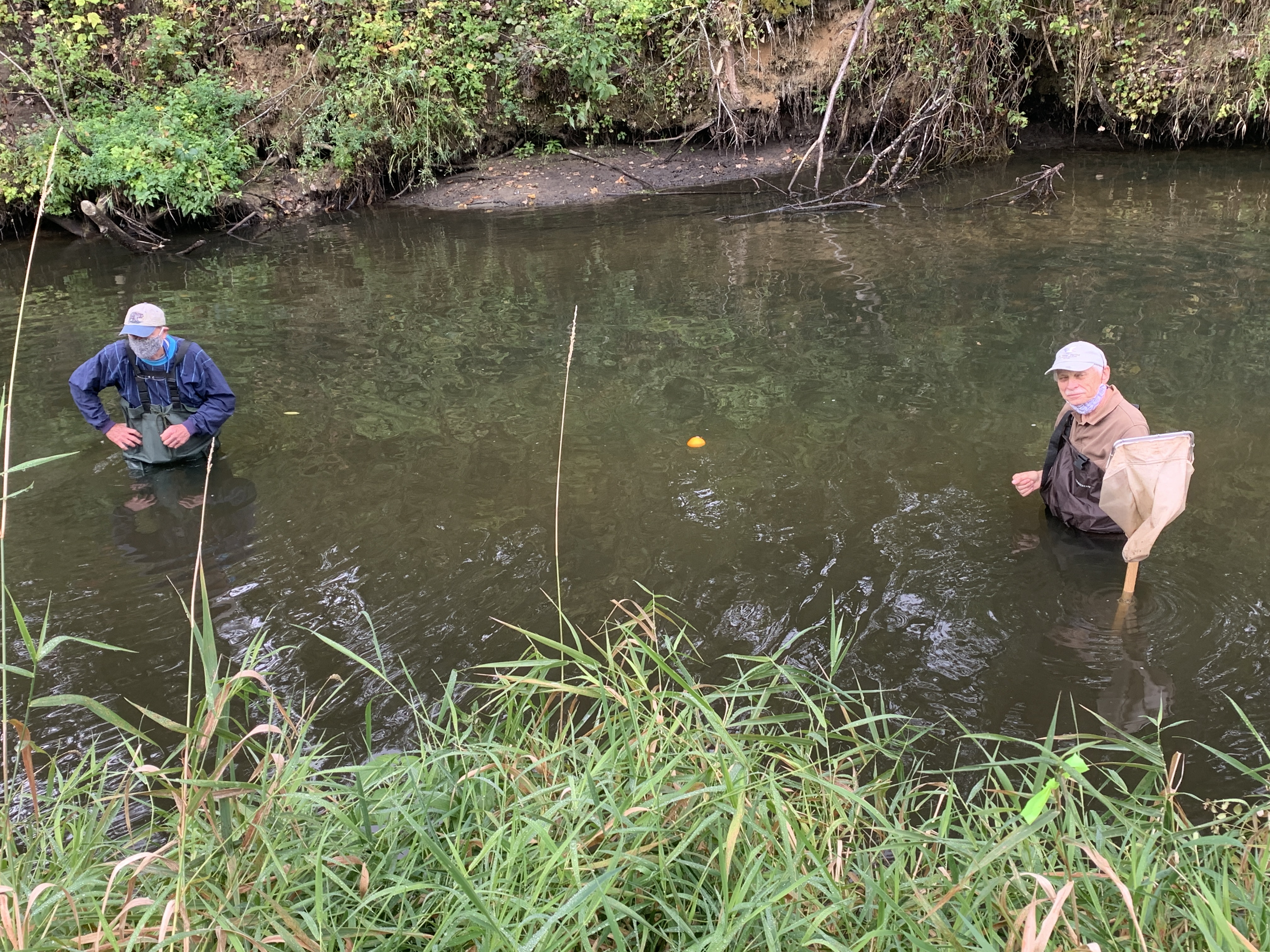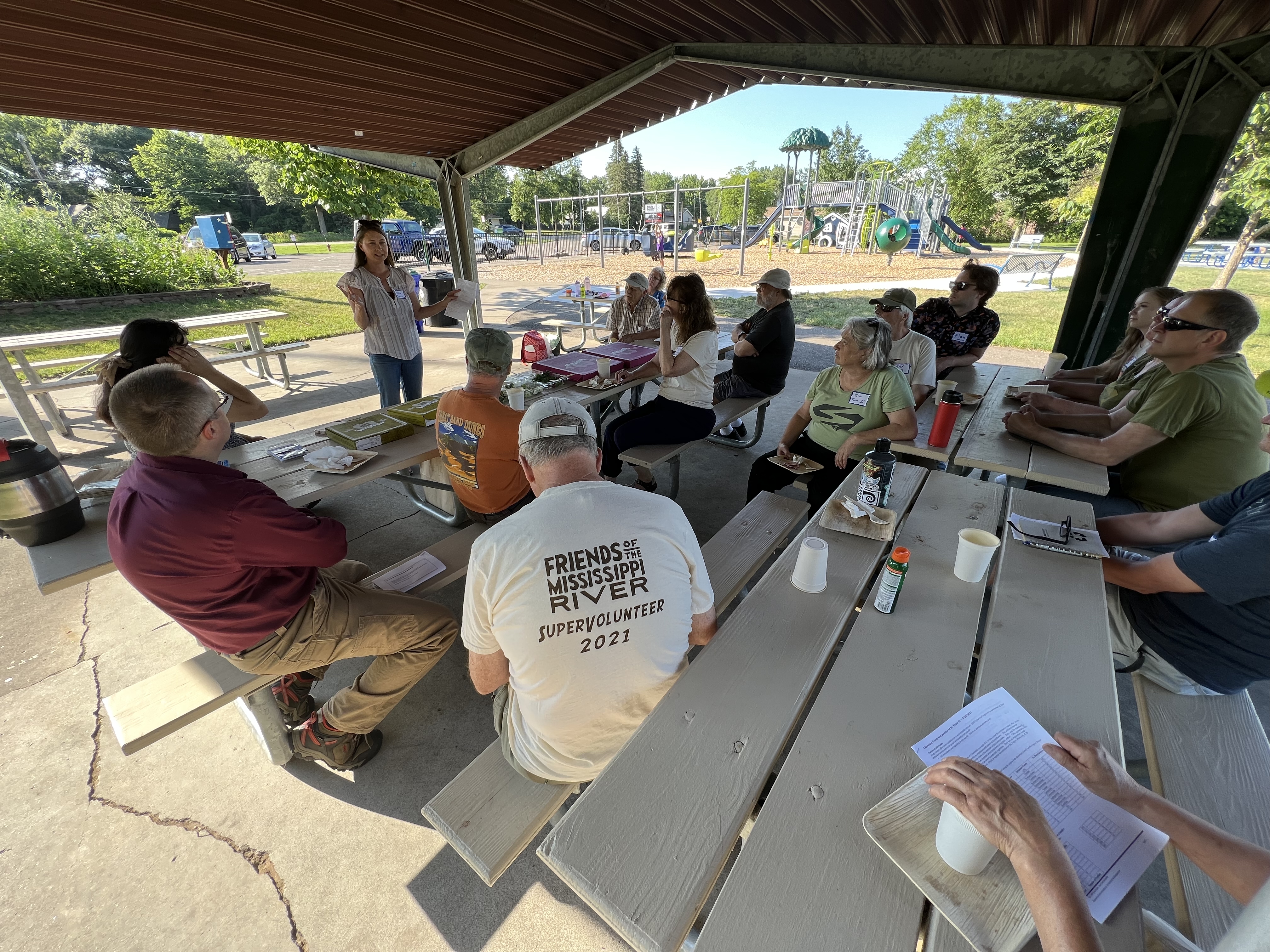Stream Health Evaluation Program starts its 16th year
August 11, 2022
If you live in the Rice Creek Watershed District and you're looking for a unique, in-depth way to contribute to your watershed, join us as a SHEP volunteer!
On a Friday evening in July, a group of volunteers gathered to share food and celebrate the start of the Stream Health Evaluation Program's 16th year. In just a few weeks, these volunteers will be donning waders and grabbing nets to head into streams in the Rice Creek Watershed District and start sampling. The data they collect will help provide a snapshot of each stream's health and whether it's improving or declining over time.
Since 2006 FMR has coordinated the Stream Health Evaluation Program (SHEP) in the Rice Creek Watershed District. Scientists train SHEP volunteers to evaluate stream biological health by sampling benthic macroinvertebrates (small, stream-dwelling bugs) and then studying these samples to assess stream quality. Volunteers contribute roughly 40 hours to the program between August and December. Each team of 10 samples three sites along Rice Creek, Clearwater Creek, Hardwood Creek and Locke Lake.
 SHEP volunteers truly wade into their watersheds, like this volunteer in 2020.
SHEP volunteers truly wade into their watersheds, like this volunteer in 2020.
Volunteers keep coming back
Between field and lab training, sampling with groups and hours spent identifying bugs, SHEP volunteers give a lot of their time to this program. Many volunteers have been involved since day one, accumulating 16 years of experience. This year, the SHEP teams include city officials hoping to gain knowledge to enhance their environmental programming, parents and their children, and friendships forged through volunteering together. Community and friendship play a large part in why volunteers stay involved.
"I come back for the science — it's always changing and always interesting," says Jo Ann Morse, a longtime volunteer. "And for the people, who are so fun to work with."
Why monitoring makes a difference
Macroinvertebrates have different reactions to pollutants and stream conditions. Some can live in polluted waters while others are more sensitive and can only survive in healthy waters. This makes the presence or absence of certain macroinvertebrates a strong indicator of the conditions of our local streams, rivers and lakes.
Our well-trained and dedicated volunteers produce reliable data that can be used to inform water resource management decisions throughout the watershed. SHEP volunteers typically score 90-99% accuracy on their identification, producing high-quality findings every year.
And with 16 years of data, this information plays a valuable role in determining the watershed's future. After all this time, certain trends are starting to take shape. One stream, for example, appears to have a five-year cycle of improvement and decline that repeats over time. Volunteers have also recorded how changes in the environment (such as drought) affect water quality. Findings can help shape policy and practices to protect these streams in the future.
"It is so interesting to look through the microscope," says volunteer Tere O'Connell, who describes herself as having a history background rather than a science background. She explains her dedication to the program as "making sure [the streams] stay healthy and get better."
 SHEP volunteers kick off the 2022 season with a report from Katie Farber from Bolton & Menk, who runs the SHEP trainings and analyzes the data.
SHEP volunteers kick off the 2022 season with a report from Katie Farber from Bolton & Menk, who runs the SHEP trainings and analyzes the data.
Get involved
This year, our SHEP teams have openings for a few more volunteers. Rice Creek Watershed District residents are especially encouraged to apply. (Check this map to see if you live in the watershed.) You can learn more about volunteering here. Contact Alex Jabbarpour at ajabbarpour@fmr.org or 651.477.0934 if you're interested in signing up.
Project support
SHEP is made possible through funding and support from the Rice Creek Watershed District, as well as technical support from Bolton & Menk. And thanks to our members for making all our programming possible.
